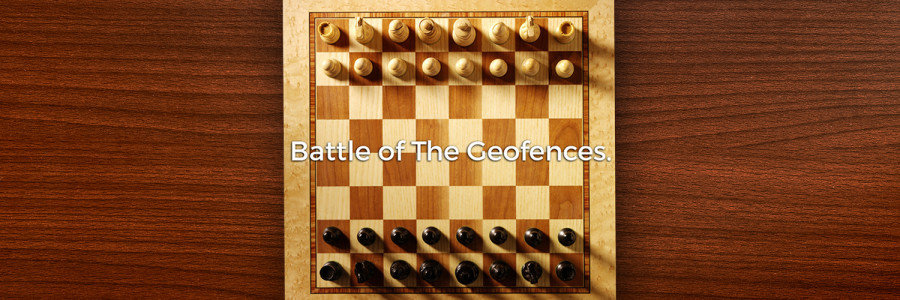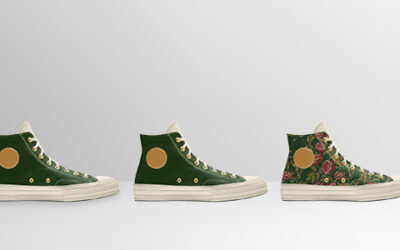
Battle of the Geofences.
And how to apply a winning strategy.
So, I’m in Minneapolis for a conference (stay with me a minute, this is relevant). I arrived early so I can see a little of a city I’ve heard great things about and have never been to. Yesterday, I decided to venture out to see some sights, visit the Minneapolis Institute of Art and do a little shopping. As a side note, here’s a little life hack for you. If you’ve never been to a city before and want to know where to shop, do a search for an Apple Store — you can’t go wrong.
Back to the story. I was speaking with the concierge at the hotel about the Minneapolis Institute of Art and mentioned I would just Uber over there. She said if you like riding a bike, it’s a short distance and there was a Nice Ride location right across the street. For those who may not know, many cities have a bike service company or organization that lets you rent a bike for 30 minutes or so and simply drop it off at another location near your destination.
Being a nice day and the fact I’m a cyclist, I was all in on this idea. I downloaded the Nice Ride app, rented the bike and took off. In fact, I explored a big chunk of the city that way, grabbing a bike, riding to the next location, walking around and hitting repeat.
So, here’s the missed opportunity: Nice Ride had my location all day. They could have easily asked for some preferences from me upon launching the app, then geofenced businesses and areas I might have liked to see. They could have turned this into a revenue stream through co-op opportunities. Point is, they could have enhanced my experience greatly by offering me these things instead of having me almost aimlessly riding around. That is a lesson learned in not having a proximity marketing strategy in place, especially one based on simple geofences.
What’s a Geofence?
Simply put, a geofence is virtual geographic boundary. Using the latitude and longitude within a mapping service, like Google Maps, you can literally draw a perimeter around a building, parking lot and just about anything else. Through GPS, that boundary is broken when a mobile device enters or leaves it. When that happens, a signal with content can be sent to your device. That’s it — I told you it was simple. Now, implementing what is sent based on individual behaviors is a whole other thing but, that’s another topic.
The Ultimate Fighting Championships, Not Really.
It seems like there’s a new company popping up every month that has some idea of what to do with geofences. The majority to date have focused around proximity marketing via mobile ad buying. Basically, when you are within a geofence and decide to search for something on your phone via a web browser, you are served up an ad based on all of your tracked preferences across a wide variety of data sets. The algorithm doesn’t know that it is Jane Smith doing the search. It just knows the demographic and preference information and then serves an ad bought by a brand whose ideal customer matches that.
Others are using geofences via social media conversations, tracking conversations on certain social networks within a geofence and then offering up location-based offers. Personally, I find this a bit creepy and intrusive.
Another way to using a geofence is through a brand’s own native app. My Nice Ride example could have done this. Within this method, there are several layers of sophistication. An app can simply greet you upon entering a geofence or say good-bye upon departure. The app can serve up relevant information about the area or a deal nearby. I’ve also seen apps provide push notifications for offers when you reach a certain level within a rewards program or some other similar milestone. It seems personal because your name is on it but it’s not a smart app; the relevancy is not truly personal to you. For that, a brand would need a machine learning or artificial intelligence algorithm embedded into their app.
Let’s Get Personal.
That all said, most companies use geofence strategies focused around getting brand-new customers. I’m not saying that’s bad. I just believe in the axiom of a bird in the hand is worth two in the bush. In other words, there’s more value in taking care of the customers you have rather than the customers you want. With practically zero acquisition costs, creating individual behavior-based promotions and experiences that are personalized to an individual’s desires at scale is the winning strategy in the end. When you can employ that level of sophistication, you can really outpace the competition. Which means if you’re not thinking location first, you’re very likely to be competitively last.
You may also be interested in
Leveraging Artificial Intelligence (AI) to Uncover Sales Opportunities
Businesses are constantly on the lookout for innovative ways to maximize their revenue. Two of the most powerful sales techniques are cross-selling and upselling. Both strategies involve offering additional products or services to a customer during the sales process,...
The Competitive Advantages of Shifting from Personalization to Hyper-Personalization
Personalization has been a trending concept for several years. In fact, 7 out of 10 customers now expect some degree of personalization from the brands they choose according to a McKinsey & Co. study. Crafting a personalized experience based on the preferences and...
Staying Ahead of the Game Through Competitive Intelligence
In today's dynamic business environment, staying ahead of the competition is no easy feat. To succeed, businesses must employ a combination of strategic acumen, creative problem-solving, and a profound grasp of prevailing market dynamics. And most importantly,...
How Small to Medium Sized Businesses Can Thrive Through AI Integration
Artificial Intelligence (AI) is no longer just a buzzword or a far-off concept, it has become a tangible reality that is transforming the way businesses operate. In fact, the global adoption of AI in companies currently stands at 35% with an additional 42% exploring...





